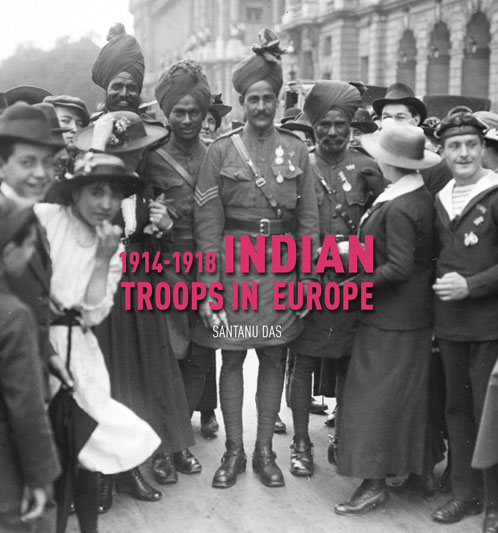|
|
The South
Asian Life & Times - SALT |
|
|||
|
Contents Feature Heritage People
Book Reviews Kaavad
Traditions of Rajasthan
- exploring
|
|
||||
|
1914 – 1918
Indian
Troops in Europe by Santanu Das is a
pictorial record of the lives of Indian troops on the western front between
1914 and 1918. It fills a void that had existed so far – that of limited
literature on the contribution of Indian soldiers on the western front. The
role of Indian troops had generally been neglected so far. This book
presents, through photographs, a full picture of the Indian experience, from
trench warfare to preparing chapatis at railway stations. The year 2014 marked the centenary of the start of
the First World war. This commemorative volume pays tribute to remember and
honour the 138,608 Indians – including 1,923 officers, 87,412 other ranks
and 49,273 non-combatants – who served in Europe between August 1914 and
December 1919. As Britain declared war on Germany on 4 August 1914,
Lord Hardinge, the Viceroy of India, announced that India too was at war,
without consulting Indian political leaders. Yet, within India the response
from the native princes and the political elite was enthusiastic. Both the
Indian National Congress and the All India Muslim League supported the war
effort. Bombay and Karachi were the two cities where
soldiers from all over the country grouped to be sent to different theatres
of war. On 26 September 1914, ships carrying the first of the Indian troops
set sail for Marseilles – 24,000 men from two infantry divisions – renamed
Lahore and Meerut – forming the Indian Corps. “Given how ill-equipped they
were in comparison to German firepower and the little training they were
given, The Indian Corps did a remarkable job. Lt Gen James Willcocks, under
whose command they fought, reported to Buckingham Palace that the ‘marvel
was how much the Indian troops have done and how willingly’. Evelyn Howell,
the head censor of the Indian Mail, remarked how the Indian troops “suffered
so much and complained so little.” Of all the colonies in the British, French and
German empires of the time, British India contributed the highest number of
men – both combatants and non-combatants. Over a million served overseas
during this period. Between 60,000 and 70,000 of these valiant men were
killed. They won 9,200 gallantry awards, including eleven Victoria Crosses. There is very little in the form of memoirs or war
diaries of the sepoys, as most were illiterate or semi-literate. In the
absence of written text, it is photographs that have captured a record of
their lives in Europe - in trenches, fields, farms, billets, cities,
railway-stations, hospitals, and prisoners-of-camps. The book is embellished with over 100 such
photographs, and interesting anecdotes, and is a very stimulating addition
to First World War literature. It should especially appeal to enthusiasts of
the First World War – and more importantly to all Indians to honour their
countrymen who fought a war – that was not theirs. About the author
Santanu Das, educated in Calcutta and Cambridge, is Reader in English at
King’s College, London. He is the author of prize-winning
Touch and
Intimacy in First World War Literature.
|
|||||
|
Copyright © 2000 - 2015 [the-south-asian.com]. Intellectual Property. All rights reserved. |
|||||
